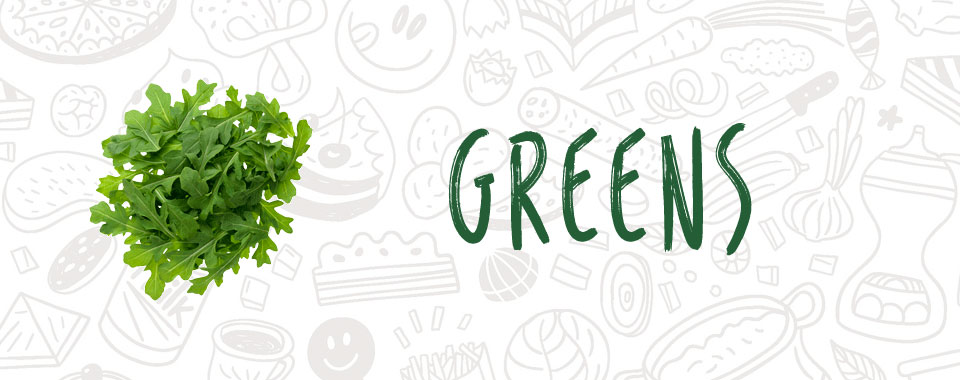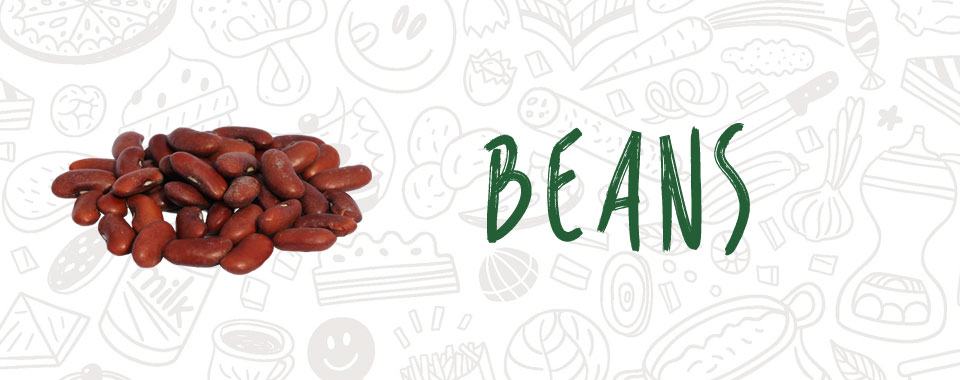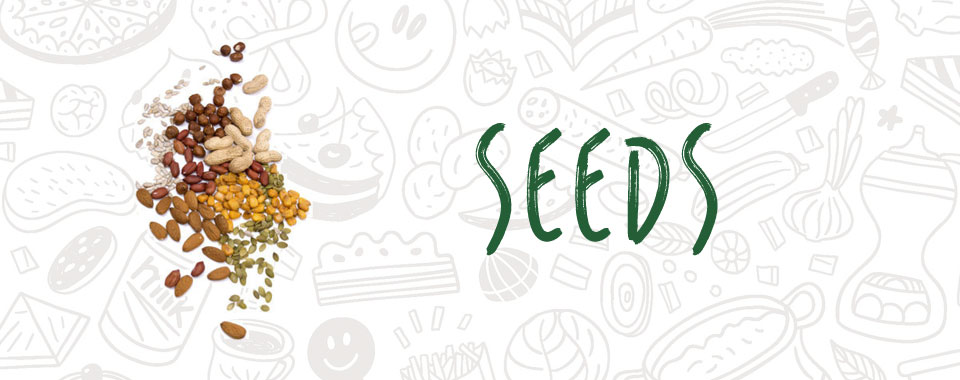“G-BOMBS” is an acronym you can use to remember the most nutrient-dense, health-promoting foods on the planet. These are the foods you should eat every day, and they should make up a significant proportion of your diet – these foods are extremely effective at preventing chronic disease and promoting health and longevity.

G – Greens
Raw leafy greens contain only about 100 calories per pound, and are packed with nutrients. Leafy greens contain substances that protect blood vessels, and are associated with reduced risk of diabetes. Greens are an excellent tool for weight loss, since they can be consumed in virtually unlimited quantities. Leafy greens are also the most nutrient-dense of all foods, but unfortunately are only consumed in minuscule amounts in a typical American diet. We should follow the example of our closest living relatives – chimpanzees and gorillas – who consume tens of pounds of green leaves every day. The majority of calories in green vegetables, including leafy greens, come from protein, and this plant protein is packaged with beneficial phytochemicals: Green vegetables are rich in folate (the natural form of folic acid), calcium, and contain small amounts of omega-3 fatty acids. Leafy greens are also rich in antioxidant pigments called carotenoids, specifically lutein and zeaxanthin, which are the carotenoids known to promote healthy vision.4 Also, several leafy greens and other green vegetables (such as bok choy, broccoli, and kale) belong to the cruciferous family of vegetables.
All vegetables contain protective micronutrients and phytochemicals, but cruciferous vegetables have a unique chemical composition – they contain glucosinolates, and when their cell walls are broken by blending, chopping, or chewing, a chemical reaction converts glucosinolates to isothiocyanates (ITCs) – compounds with a variety of potent anti-cancer effects. Because different ITCs can work in different locations in the cell and on different molecules, they can have combined additive effects, working synergistically to remove carcinogens, reduce inflammation, neutralize oxidative stress, inhibit angiogenesis (the process by which tumors acquire a blood supply), and kill cancer cells.

B – Beans
Beans (and other legumes as well) are a powerhouse of superior nutrition, and the most nutrient-dense carbohydrate source. They act as an anti-diabetes and weight-loss food because they are digested slowly, having a stabilizing effect on blood sugar, which promotes satiety and helps to prevent food cravings. Plus they contain soluble fiber, which lowers cholesterol levels.6 Beans are unique foods because of their very high leve ls of fiber and resistant starch, carbohydrates that are not broken down by digestive enzymes. Fiber and resistant starch not only reduce total the number of calories absorbed from beans, but are also fermented by intestinal bacteria into fatty acids that help to prevent colon cancer. Eating beans, peas, or lentils at least twice a week has been found to decrease colon cancer risk by 50%. Legume intake also provides significant protection against oral, larynx, pharynx, stomach, and kidney cancers.

O – Onions
Onions, along with leeks, garlic, shallots, and scallions, make up the Allium family of vegetables, which have beneficial effects on the cardiovascular and immune systems, as well as anti-diabetic and anti-cancer effects. Allium vegetables are known for their characteristic organosulfur compounds, Similar to the ITCs in cruciferous vegetables, organosulfur compounds are released when onions are chopped, crushed, or chewed. Epidemiological studies have found that increased consumption of Allium vegetables is associated with lower risk of gastric and prostate cancers. These compounds prevent the development of cancers by detoxifying carcinogens, halting cancer cell growth, and blocking angiogenesis.10 Onions also contain high concentrations of health-promoting flavonoid antioxidants, predominantly quercetin, and red onions also contain at least 25 different anthocyanins. Quercetin slows tumor development, suppresses growth and proliferation and induces cell death in colon cancer cells. Flavonoids also have anti-inflammatory effects that may contribute to cancer prevention.

M – Mushrooms
Consuming mushrooms regularly is associated with decreased risk of breast, stomach, and colorectal cancers. In one recent Chinese study, women who ate at least 10 grams of fresh mushrooms each day (about one mushroom per day) had a 64% decreased risk of breast cancer. Even more dramatic protection was gained by women who ate 10 grams of mushrooms and drank green tea daily – an 89% decrease in risk for premenopausal women, and 82% for postmenopausal women. White, cremini, Portobello, oyster, shiitake, maitake, and reishi mushrooms all have anti-cancer properties – some are anti-inflammatory, stimulate the immune system, prevent DNA damage, slow cancer cell growth, cause programmed cancer cell death, and inhibit angiogenesis. In addition to these properties, mushrooms are unique in that they contain aromatase inhibitors – compounds that can block the production of estrogen. These compounds are thought to be largely responsible for the preventive effects of mushrooms against breast cancer – in fact, there are aromatase-inhibiting drugs on the market that are used to treat breast cancer. Regular consumption of dietary aromatase inhibitors is an excellent strategy for prevention, and it turns out that even the most commonly eaten mushrooms (white, cremini, and Portobello) have a high anti-aromatase activity. Keep in mind that mushrooms should only be eaten cooked: several raw culinary mushrooms contain a potentially carcinogenic substance called agaritine, and cooking mushrooms significantly reduces their agaritine content.

B – Berries
Blueberries, strawberries, and blackberries are true super foods. Naturally sweet and juicy, berries are low in sugar and high in nutrients – they are among the best foods you can eat. Their vibrant colors mean that they are full of antioxidants, including flavonoids and antioxidant vitamins – berries are some of the highest antioxidant foods in existence. Berries’ plentiful antioxidant content confers both cardioprotective and anti-cancer effects, such as reducing blood pressure, reducing inflammation, preventing DNA damage, inhibiting tumor angiogenesis, and stimulating of the body’s own antioxidant enzymes. Berry consumption has been linked to reduced risk of diabetes, cancers and cognitive decline. Berries are an excellent food for the brain – berry consumption improves both motor coordination and memory.

S – Seeds
Nuts and seeds contain healthy fats and are rich in a spectrum of micronutrients including phytosterols, minerals, and antioxidants. Countless studies have demonstrated the cardiovascular benefits of nuts, and including nuts in the diet aids in weight maintenance and diabetes prevention. The nutritional profiles of seeds are similar to nuts when it comes to healthy fats, minerals, and antioxidants, but seeds are also abundant in trace minerals, higher in protein than nuts, and each kind of seed is nutritionally unique. Flax, chia, and hemp seeds are extremely rich sources of omega-3 fats. In addition to the omega-3s, flaxseeds are rich in fiber and lignans. Flaxseed consumption protects against heart disease by a number of different mechanisms, and lignans, which are present in both flaxseeds and sesame seeds, have anti-cancer effects. Sunflower seeds are especially rich in protein and minerals. Pumpkin seeds are rich in iron and calcium and are a good source of zinc. Sesame seeds have the greatest amount of calcium of any food in the world, and provide abundant amounts of vitamin E. Also, black sesame seeds are extremely rich in antioxidants. The healthy fats in seeds and nuts also aid in the absorption of nutrients when eaten with vegetables.

